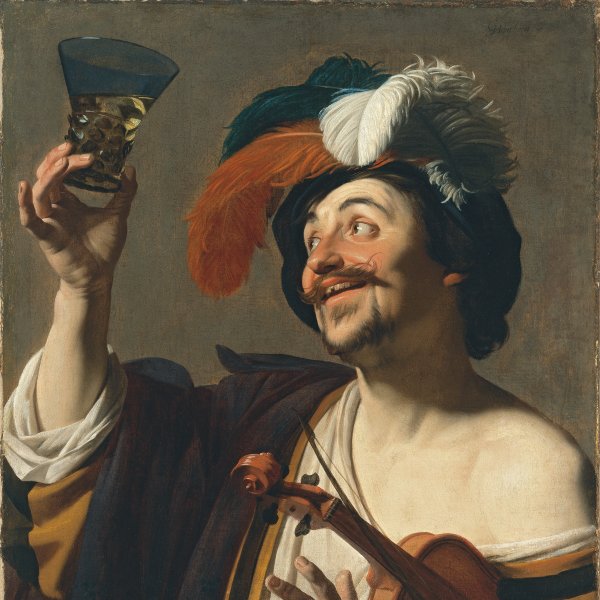Gerard van Honthorst
Gerard van Honthorst is one of the leading figures of the Utrecht School and was responsible for the dissemination of Caravaggio’s style in Holland. He was born in Utrecht into a Catholic family of decorative painters. He trained with Abraham Bloemaert who was the leading artist of the classicising trend within Dutch painting.
It is known that Honthorst travelled to Rome as a young man and he is documented there for the first time in 1616. In Rome he enjoyed the protection of Cardinal Scipione Borghese and the Marquis of Giustiniani. His nocturnal scenes in the manner of Caravaggio that he painted for the church of Santa Maria della Scala in Rome and for Santa Felicità in Florence earned him the nickname of “Gherardo delle Notti”.
In 1620 Honthorst returned to Utrecht and married Sophia Coopmans. Two years later he registered with the guild of Saint Luke, and was dean for four years. He opened his own studio in 1622 and over the following years produced portraits, genre scenes and allegorical and mythological works. It is known that Rubens visited Honthorst in 1627.
Honthorst’s international fame resulted in an invitation from Charles I of England in 1628 to work at court, where the artist remained for six months, painting his first commission for the Stuart house: a large-format historical portrait depicting Charles I and Henrietta Maria as Apollo and Daphne (Hampton Court Palace, UK).
The artist’s fame continued to grow, particularly at the courts of Europe, and over the following years he received commissions from The Hague, Bohemia and Denmark. In 1637 Honthorst moved to The Hague where he opened a second studio. During this period he was involved in the decoration of the Oranjezaal in the Huis ten Bosch. He retired to his native city in 1652 where he remained until his death.



